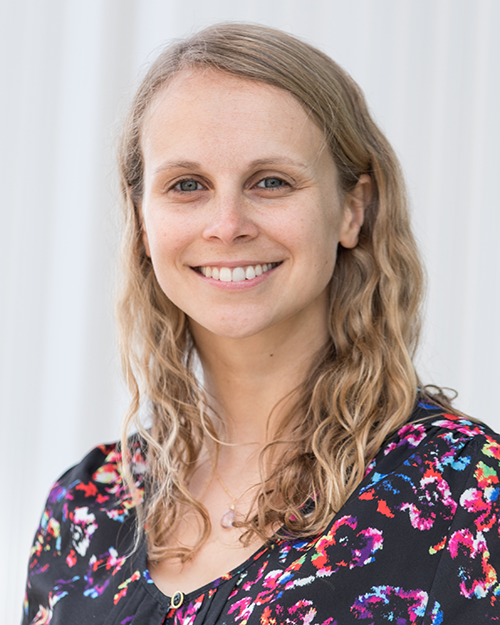
Naming a phenomenon helps us talk about it. As graduate students, many of us have heard of “imposter syndrome”: the psychological term used to describe feelings of doubt and failure in the workplace despite being a high achieving individual. Throughout my graduate career, I’ve had several discussions with my peers on the topic of our imposter syndrome. Commiserating with graduate students offered some relief in the fact that others felt similarly. However, here I am four years later, and I still feel like a fraud sometimes. We have named the things we feel, but is there any corrective course or direction provided in its naming? Is there a cure for imposter syndrome?
Imposter syndrome is highly prevalent in women and people of color (POC). It can look different from person to person. Some may experience psychological distress while others may encounter obstacles that prevent them from doing their job. There are endless resources on the internet touting tips and tricks to assuage feelings of inadequacy, but these fail to address the root cause of imposter syndrome and the systems that allow it to flourish. This February, an article from the Harvard Business Review (HBR) titled “Stop Telling Women They Have Imposter Syndrome” examined why imposter syndrome exists in the workplace (1). The authors outline a framework of racism and implicit bias that exacerbate the feelings we describe as imposter syndrome in women and POC.
The HBR article started examining imposter syndrome from the beginning with the first study that identified and named “imposter phenomenon”. Published in 1978, this study looked only at high-achieving white women, leaving POC out of the definition for decades. Meanwhile, current studies report racial and ethnic minorities are especially susceptible to feeling like a fraud (2). Women of color have different experiences in the workplace due to the intersection of their gender and race, which can translate into feeling like a failure despite receiving positive remarks on their work performance. Systemic racism and bias have resulted in an accumulation of white, heterosexual men in positions of leadership. With such a narrow vision of what leadership can look like, marginalized identities are less likely to be perceived as “professional” or suitable for those leadership roles. If there is a cure to imposter syndrome, it would begin with promoting new and unconventional examples of leadership.
The new ideas presented in the HBR article drastically changed my views on imposter syndrome and I wanted to start a discussion about it here at Tufts. As we strive to be an anti-racist institution, we should address the risk that imposter syndrome poses to our community. In March, Boston Graduate Women in Science and Engineering (GWiSE) held an event over Zoom to discuss the article. During our conversation, many expressed issues with the term “imposter syndrome” itself. “Syndrome” denotes a pathology of the individual and absolves the systems that bring it about of any blame. In other words, we are told imposter syndrome is a “you” problem. Others agreed that graduate school often feels like a competition for who is the most miserable; the more miserable you are, the more work you must be doing. This competition can enhance feelings of incompetency. We concluded the discussion by reminding ourselves that failure is an undeniable fact of graduate school and that our mental health requires just as much attention as our experiments. GWiSE thanks everyone who shared their personal experiences and opinions on imposter syndrome and systemic racism in the workplace at this event.
In reality, imposter syndrome is much larger than a “you” problem. The negative consequences of imposter syndrome echo far beyond the individual. It contributes to the leaky pipeline—a drain of qualified and exceptional scientists from academia prior to reaching faculty positions. Studies have shown that diverse teams come up with more creative solutions to problems (3). Thus, it is in our institution’s best interest to retain racial, ethnic, and religious minorities. As Tufts and other organizations around the nation begin to dismantle systemic racism, we should also address imposter syndrome as a symptom of a racist and biased workplace, not a diagnosis. One course of action laid out in the HBR article was to allow new manifestations of leadership to shine. Confidence should not be the only measure of a good leader. Furthermore, feeling unsure in our abilities should not be pathologized, but rather accepted as normal. We should stop telling women and POC they have imposter syndrome and actively promote a supportive workplace culture.
- Tulshyan, R., & Burey, J. (2021, March 31). Stop telling women they have imposter syndrome. Retrieved April 13, 2021, from https://hbr.org/2021/02/stop-telling-women-they-have-imposter-syndrome
- Cokley, K., McClain, S., Enciso, A., & Martinez, M. (2013). An examination of the impact of minority status stress and impostor feelings on the mental health of diverse ethnic minority college students. Journal of Multicultural Counseling and Development, 41(2), 82-95. doi:10.1002/j.2161-1912.2013.00029.x
- Maddux, W. W., Bivolaru, E., Hafenbrack, A. C., Tadmor, C. T., & Galinsky, A. D. (2013). Expanding opportunities by opening your mind. Social Psychological and Personality Science, 5(5), 608-615. doi:10.1177/1948550613515005




